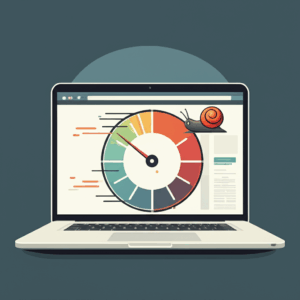- Why Website Speed Matters for SEO
- Impact on User Engagement and Bounce Rate
- Website Speed: A Critical Factor for Sales
- The Impact of Speed on Conversions
- How to Improve Your Website Speed
- Optimize Images:
- Leverage Browser Caching:
- Minimize HTTP Requests:
- Choose a Reliable Hosting Provider:
- Implement a Content Delivery Network (CDN):
- Minify CSS and JavaScript:
- Enable Gzip Compression:
- Measuring and Monitoring Website Speed
- Website Speed: The Future of Online Success
Website Speed: Crucial for SEO & Sales
Website speed is a critical factor for both search engine optimization (SEO) and sales. In today’s fast-paced digital world, users expect websites to load quickly. A slow website can lead to a poor user experience, increased bounce rates, and ultimately, lost revenue. Optimizing your website’s speed is no longer a luxury but a necessity for online success.
Why Website Speed Matters for SEO

Search engines, particularly Google, prioritize user experience. Page speed is a significant component of user experience, directly influencing how a site ranks in search results. Google’s algorithm considers website speed as a ranking factor, meaning faster websites are more likely to appear higher in search engine results pages (SERPs). This increased visibility translates to more organic traffic and potentially higher conversion rates.
Impact on User Engagement and Bounce Rate
A slow-loading website can frustrate users, leading them to abandon the site before it even fully loads. This is known as a “bounce.” A high bounce rate signals to search engines that the website offers a poor user experience, negatively impacting SEO. Conversely, a fast website keeps users engaged, encouraging them to explore more pages and ultimately increasing the chances of conversion.
Website Speed: A Critical Factor for Sales
Not only is site speed crucial for SEO, but it also plays a vital role in driving sales. The speed at which your website loads directly impacts user behavior and purchase decisions. A slow website can lead to lost sales and decreased customer satisfaction.
The Impact of Speed on Conversions
Research consistently shows a strong correlation between website speed and conversion rates. Even a one-second delay in page load time can result in a significant drop in conversions. Customers are less likely to complete a purchase on a slow website due to frustration and impatience. A fast, seamless experience, on the other hand, encourages users to browse products, add items to their cart, and ultimately complete the checkout process.
How to Improve Your Website Speed
Optimizing your website speed doesn’t have to be a daunting task. There are several strategies you can implement to improve loading times and enhance user experience:
Optimize Images:
Large image files can significantly slow down a website. Optimizing images by compressing them without compromising quality is a crucial step. Use appropriate image formats like WebP, which offer superior compression compared to JPEG and PNG.
Leverage Browser Caching:
Browser caching allows repeat visitors to load your website faster by storing static resources like images, CSS, and JavaScript files on their local devices. This reduces the amount of data that needs to be downloaded on subsequent visits.
Minimize HTTP Requests:
Each element on your website, such as images, scripts, and stylesheets, requires a separate HTTP request. Reducing the number of these requests by combining files and minimizing external resources can significantly improve loading times.
Choose a Reliable Hosting Provider:
Your hosting provider plays a significant role in your website’s speed. Opting for a reliable and high-performance hosting plan can drastically improve loading times, especially during peak traffic periods.
Implement a Content Delivery Network (CDN):
A CDN distributes your website’s content across multiple servers geographically closer to your users. This reduces latency and ensures faster loading times for visitors from different locations.
Minify CSS and JavaScript:
Minifying CSS and JavaScript files involves removing unnecessary characters and whitespace, reducing file sizes and improving download speeds.
Enable Gzip Compression:
Gzip compression reduces the size of your website’s files before they are sent to the user’s browser, leading to faster download times.
Measuring and Monitoring Website Speed
Regularly measuring and monitoring your website speed is essential to ensure ongoing optimization. Tools like Google PageSpeed Insights, GTmetrix, and Pingdom provide valuable insights into your website’s performance and identify areas for improvement. These tools offer specific recommendations and actionable steps to optimize your website for speed and enhance user experience.
Website Speed: The Future of Online Success
In the increasingly competitive digital landscape, website speed is no longer just a technical aspect but a crucial element of business strategy. Prioritizing website speed optimization can significantly impact your SEO, enhance user experience, and ultimately drive sales. By implementing the strategies outlined above and continuously monitoring your website’s performance, you can ensure your website remains competitive and provides a seamless and enjoyable experience for your visitors, leading to increased conversions and business growth. Investing in website speed is investing in the future success of your online presence.











Leave a Reply